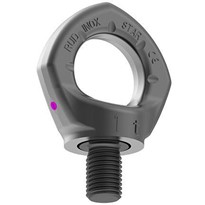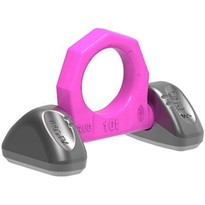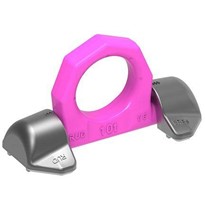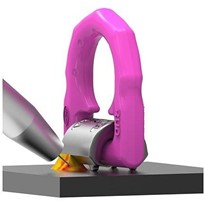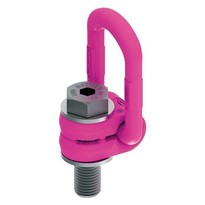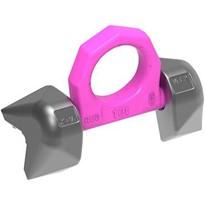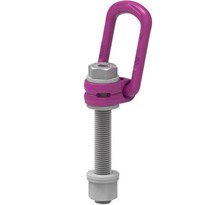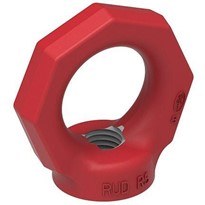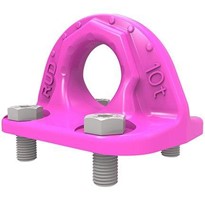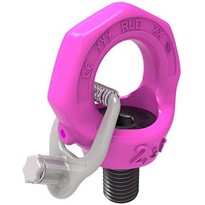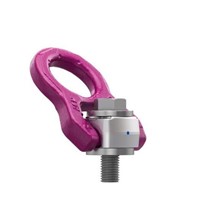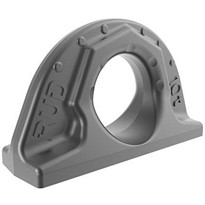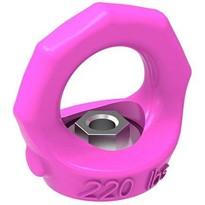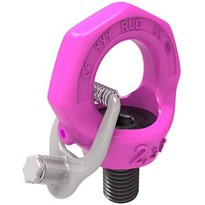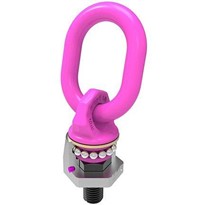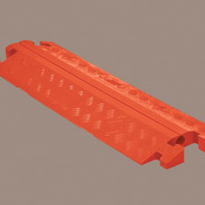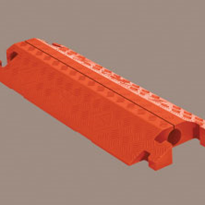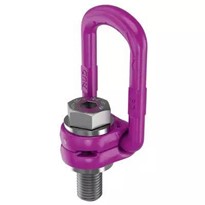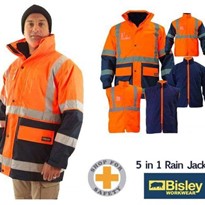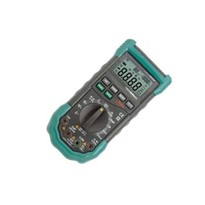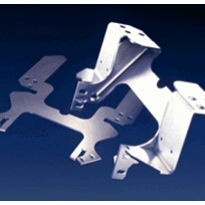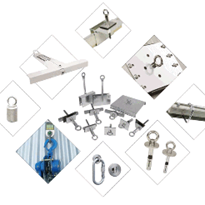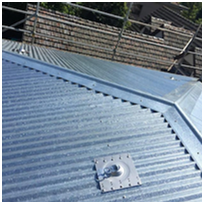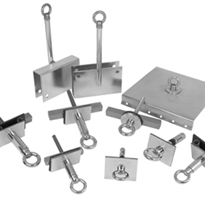Part 1 of a 2 part post.
RUD has a long pedigree of manufacturing chains for over 140 years including 40 years in lifting technology and load securing. When it comes to lifting, securing, or lashing, the world looks to RUD which offers over 700 different lifting and lashing points for all requirements across mining, quarries, transport, and infrastructure.
All RUD lifting and load securing products are made in Germany. Many of the standards used in the lifting and load securing industry originated from RUD, such as the inspection stamp H1 for high strength chains in 1953, approval for Grade 8 (H1-8) in 1972 and approval for Grade 12 (D1-12) for round steel chains in 2007.
What is a Lifting Point?
A lifting point is the part which connects the load with the lifting device (such as a crane) to lift, turn, rotate, and move cargo. Lifting points are attached with hooks, shackles, and other connecting elements.
Different types of lifting points
Lifting points come in boltable and weldable options and all RUD lifting points are designed for a dynamic load of 20,000 load cycles.
Boltable Lifting Points
Boltable lifting points are used generally to lift loads. Because they are bolted, they are flexible and can be used in applications which require installation and removal when required.
Examples of Boltable Lifting Points are VLBG-PLUS, ACP-TURNADO, VRS-F STARPOINT, etc.
The advantages of Boltable Lifting Points:
- Can be attached to any load because of the wide range of threads
- Come in a WLL range from 100 kg to 250 tonnes
- Offer maximum safety including the bolts which are 100% crack tested
- Are compliant to Australian and European standards
Boltable lifting points also come in rotating and swivel options where the lifting point swivels in the direction of the load to offer additional flexibility and safety.
Weldable Lifting Points
Weldable lifting points are used when there is a requirement for a permanent connection on the load. These are permanently welded to the load for rotating and turning.
Examples of Weldable Lifting Points are VLBS, ABA, etc.
The advantages of Weldable Lifting Points:
- Suitable for any welding process with easy to weld material
- Come in a WLL range from 630 kg to 100 tonnes
- Include drop-forged, high-strength quenched and tempered steel suspension rings
- Are crack-tested and load-tested to Australian and European standards
Weldable lifting points also come in rigid options where the direction cannot be changed and hence used in single leg lifts.
What do I need to consider when using lifting points?
- Type of lifting point – Determine if the lifting point should be boltable (removable) or weldable (fixed)
- The load – Consider the overall weight of the load and the number of lifting points to be used in the process
- Clearance – Ensure enough clearance for delicate loads to avoid damage
- Lifting and rotation – How is the load lifted or which direction does the load swing
- Symmetry of load – Determine the necessary WLL for symmetrical or asymmetrical loads
Continued into Part 2 for the TOP 5 LIFTING POINTS from RUD …
Article copyright to RUD, this information is accurate at the time of publication and RUD Australia takes no responsibility for any errors inadvertent or otherwise.
If you want to know how the team at RUD can help you, please call 07 3809 1300 or fill out a form here.
Sources:
- https://www.rud.com


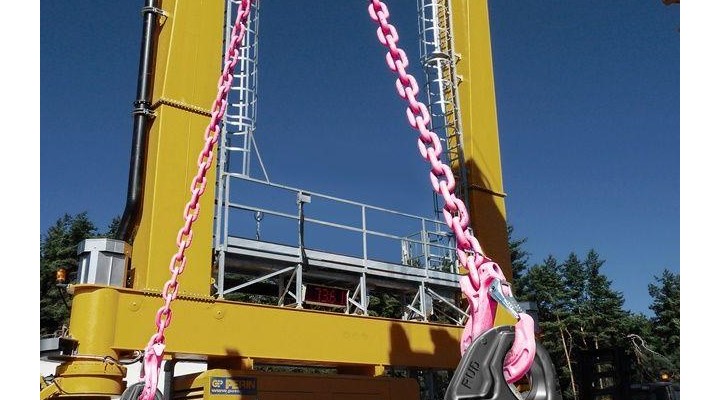
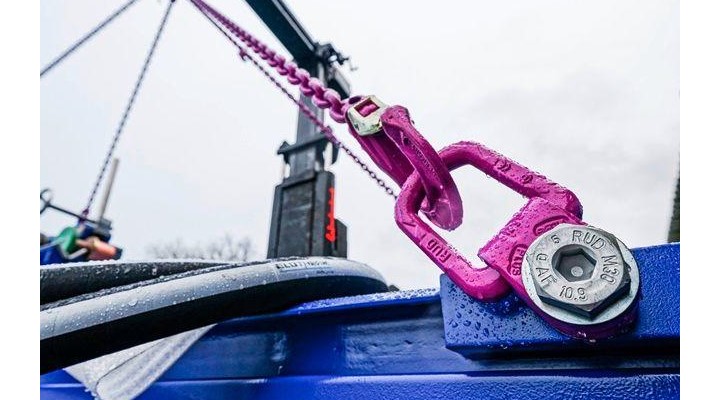
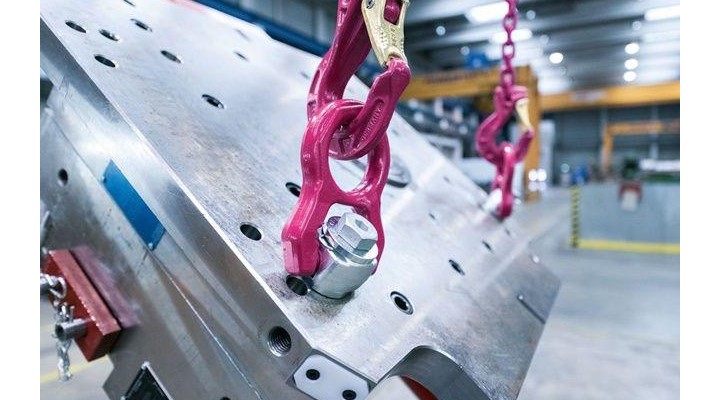
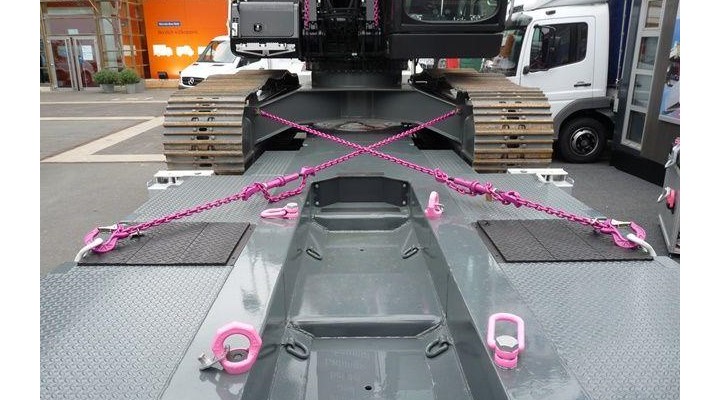




-160x160-state_article-rel-cat.png)
-160x160-state_article-rel-cat.png)


-160x160-state_article-rel-cat.png)


-160x160-state_article-rel-cat.png)





